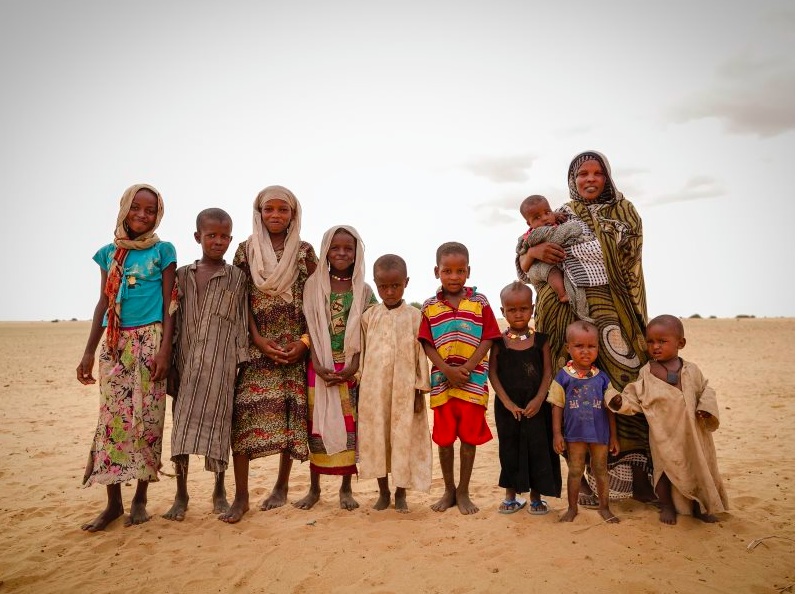
By Assaad Razzouk
Yesterday, European leaders promised to triple their spending on border protection from Euro 36 million a year to €108 million a year. With this paltry sum, Europe is hoping to “tackle the root causes of the human emergency” it faces.
Europe’s response is wholly inadequate and will fail.
The Middle East is burning, from Libya to Syria, Iraq and Yemen. Jordan, Turkey and Lebanon are bursting with millions of refugees they can’t afford to help.
In Libya, there are 600,000 people waiting to get to Europe right now and if given the opportunity, a couple of million will join them from the refugee camps in Lebanon, Turkey and Jordan.
This migration pressure from so many Middle Eastern states on fire is on top of one of the key drivers of migration from Africa to Europe via Mediterranean boats: the striking climate disaster unfolding in the Great Sahel Desert region of Africa.
Mounting food insecurity across North Africa
From Senegal in West Africa, to Eritrea in East Africa, via Mali, Niger, Chad and Sudan, the Sahel region is affected by a ‘Chinese menu’ of climate change-related impacts.
Rainfall is decreasing, temperatures are increasing, agricultural output is disrupted and people are moving around the region searching for jobs, food, water and shelter. When they don’t find them in their countries, they migrate north.
Now they are joined by Syrians, Yemenis, Iraqis from the Middle East, and others. The situation is calamitous, and getting worse.
Africa’s Lake Chad for example, on which 68 million people depend for water, shrank 95% since 1963. The Middle East and Northern Africa are predicted to see water shortages increasing fivefold by 2050.
Water stress will have dire implications on agriculture and climate change will in turn decrease crop yields by 15 to 20%. Further water shortages will also have devastating effects on the Nile Delta, where increased evaporation and heavier water use upstream have already negatively affected fertility.
Without fresh water to keep salinity levels low in the coastal farmland, the once fertile lands become barren and salt-encrusted. Egypt is now facing mounting food insecurity, despite a widespread food subsidy program.
Acute vulnerability to drought- sea level rise
The Middle East is extremely vulnerable to sea level rise, which could impact 24 of its port cities and affect 25% of the total population.
The Nile Delta, among the most densely populated agricultural areas in the world and home to two thirds of the 82 million Egyptians, is predicted to be one of the world’s most susceptible locations to sea level rise, with the most optimistic predictions still displacing millions of Egyptians. In some areas, the coast is already eroding at a rate of nearly 100m each year.
The Intergovernmental Panel on Climate Change, or IPCC, estimates that Africa will suffer from a future warming of 0.2°C per decade (low warming scenario) to more than 0.5 °C per decade (high warming scenario).
The temperature rises are expected to be greatest in Sahel, which has experienced a dramatic reduction in mean annual rainfall throughout the region (the IPCC estimates this rainfall decrease at 29-49% compared to a 1931-1960 baseline period.
Not everyone is a climate refugee of course. In 2014, 220,000 irregular migrants arrived to Europe and more than 500,000 asylum applications were lodged. Many are fleeing the political oppression of dictatorships or the psychotic terror of Boko Haram.
Undoubtedly however, climate change is increasing migrant flows and will contribute to even greater increases going forward.
Tackling the root causes
The solution cannot be the deployment of ridiculously weak resources to police the Mediterranean, in a weak attempt to pander to the public.
Any strategy to address the migrant tragedy should shed light on the driving forces behind it and plans by the international community to help people stay where they are, even if that’s an effort which might take decades.
Sadly no one is about to stabilize Libya, Syria or Yemen any time soon. And Sub-Saharan Africa’s poverty is likely an even longer-lasting state of affairs – not least thanks to our own failed approach to ‘development’, which systematically undermines traditional and sustainable rural livelihoods.
In the meantime, what should be done right now is clear. Yes, we need more robust and effective policing in the short term. But above all we need a more humane and long term approach to the crisis, and one that recognises our own culpability in its creation.
Recognising climate refugees
First, all EU countries should share the burden, apportioning refugees across all member states.
Second, the US, Canada, Australia and other OECD members must also carry their fair share, which they are not: The US accepted 36 Syrian refugees in 2013, out of a total of some 3 million.
Third, recognizing that a basic principle of international law is an obligation to accept refugees – the law should be updated to accommodate climate change. It is ridiculous that it doesn’t already, given that climate change is a key factor in migration and in amplifying and worsening conflicts.
We are in the midst of a horrific negative spiral, where climate change makes conflicts uglier and new ones erupt over natural resources. Then violent conflicts amplify the impacts of climate change by degrading infrastructure, decreasing the capacity of governments to function and harming natural resources and employment opportunities. This in turn increases the likelihoods of more conflicts driven by climate change, and so on.
The current 1951 Refugee Convention defines a refugee as a person who “has a well-founded fear of persecution because of his/her race, religion, nationality, membership in a particular social group or political opinion”
And so it excludes sea level rise, sinking or disappearing island states, droughts, water stresses and desertification, to name but a few examples. This should be revisited with urgency with the objective of clarifying the legal status of climate migrants as refugees.
We must stop focusing on symptoms and implement comprehensive approaches that address the causes behind Europe’s boat people tragedy.
Razzouk is the CEO and co-founder of Sindicatum Sustainable Resources, a clean energy company based in Singapore, and an expert in climate and clean energy policy and markets










The food and water insecurity will come to the EU as climate change kicks in , and governments realise that most EU countries are overpopulated and unsustainable .
Then what will happen to all those migrants who fled to Europe , where will they go ?